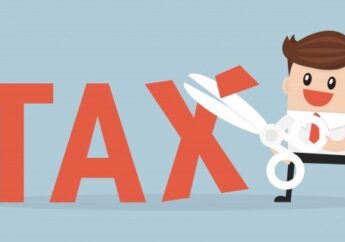5 Retirement Withdrawal Strategies: How To Withdraw Funds
by Sumona Finance 04 March 2022

Try figuring out how to withdraw retirement assets while minimizing taxes if you think great saving for retirement is challenging. Retirement withdrawal planning and proper strategies can save you from excessive tax payments.
5 Retirement Withdrawal Strategies
“Income, estate, and state taxes can eat away as much as 70% of your hard-earned retirement assets,” says IRA retirement plan experts. Most people would rather keep that money in their own pockets. But how can this be accomplished?
Here are a few intelligent retirement withdrawal options for avoiding costly tax traps and keeping more of your retirement funds.
1. The 4% Rule

The 4 percent rule, which many people use to regulate their retirement withdrawals, is credited to financial planner William Bengen.
According to the rule, removing 4% from a retirement fund in the first year, followed by inflation-adjusted withdrawals every year after that should ensure that enough money is available to last a 30-year retirement.
Bengen’s guideline has been around for more than 25 years, and current counselors warn individuals shouldn’t get too attached to the idea of withdrawing 4%. While the notion is sound, in theory, the appropriate percentage for a retiree should be tailored to the individual’s age and expected lifespan.
Experts say, “They are not convinced 4% is the gold standard of safety anymore.” Withdrawing too much money, especially during bear markets, can drain an account well before retirement.
2. The Fixed-Dollar Strategy
The fixed-dollar plan requires retirees to calculate how much money they need to withdraw each year and then re-evaluate that amount every few years.
The retirement withdrawal amount could be reduced in the future to reflect a lower portfolio value, or it could be increased if the value of the investments has improved.
One advantage of the fixed-dollar method is that retirees know exactly how much money they will receive each year.
3. Withdraw From Accounts In The Right Order

Don’t be seduced by fast gratification if you need retirement savings and are deciding whether to take them from an IRA, 401(k), or Roth account. Although a Roth IRA distribution is tax-free, you may end up paying more in lost opportunity costs.
Instead, take money out of taxable retirement accounts first, then Roth IRAs as long as possible.
Skeptical? Consider what happens if a 72-year-old retirement withdrawal amount is $18,000 from a regular IRA while paying taxes at 24%: They’ll be responsible for $4,320 in taxes. They won’t have to pay anything if they withdraw the same amount from a Roth.
However, if this person does not have to take an RMD from a Roth IRA and instead earns 7% yearly for the next ten years, the account will grow to $35,409. When those earnings are removed from the Roth, whether by the account holder or a beneficiary, they are tax-free.
4. Systematic Withdrawals
Systematic retirement withdrawals ensure that your principal remains invested throughout your retirement. You only take out the money generated by your investments in the form of interest or dividends.
The biggest advantage of this strategy is that you will never run out of money in your retirement account. Unfortunately, to live comfortably, you’ll need a sizable savings account.
Your earnings will fluctuate from year to year, depending on market conditions. This creates a stable financial strategy even for more challenging times. If your investment and returns don’t keep up with inflation, your purchasing power may dwindle.
5. Create A Floor:

Some of the retirement withdrawal accounts provide an income guarantee. The flooring strategy is providing guaranteed income. A straightforward way is just to purchase an annuity with an income rider, and your inflation is adjusted.
Now, many lifetime products are already available in the market, which provides guaranteed income. These products are not going to pay you until you are not 75 and 85. These are pretty affordable products when you are buying the products at a young age.
Conclusion:
All of this strategic planning for the retirement withdrawal is going to help you to plan for your future. Maintain all of these five tips and control the taxation of your accounts. Most of the high amount withdrawals are linked with the taxations. By following these tips, you can develop a solid future for yourself without paying a lot of money for tax.
Read Also:







































































































